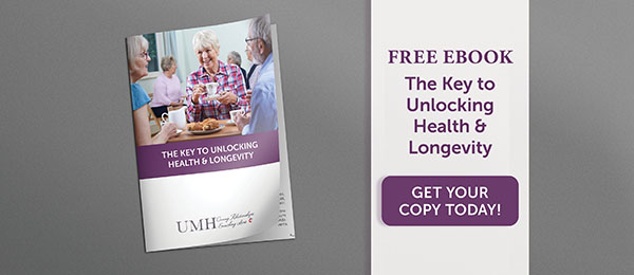By: Tracey Haughton on June 4th, 2015
Cataracts and Older Adults - What To Do
assisted living | Aging & Caregiving
According to the National Eye Institute (NEI), “more than half of all Americans age 80 or older either have cataracts or have had surgery to get rid of cataracts.” Since most cataracts develop from natural age-related changes to the eyes, you and the older adults in your life must know how to spot, prevent, and cope with cataracts.
What Are Cataracts?
Cataracts are cloudy areas in the normally clear lens of your eye. While most cataracts are related to age, they can also happen after an eye injury or after surgery for another eye problem.
The development of cataracts can result in clouded vision as well as increased difficulty with everyday tasks, including reading, driving, and identifying facial expressions. Typically, cataracts develop slowly. They may not initially affect your aging loved one’s eyesight. However, as they progress, they can begin to impact vision.
There are several cataract symptoms to watch out for, including:
- Cloudy or blurry vision
- Faded colors
- Poor eyesight at night
- Sunlight, lamps, or headlines seeming “too bright”
- Seeing a halo around lights
- Seeing double (this can sometimes go away as the cataract gets bigger)
- Needing to frequently change your eyeglass or contact lens prescription.
The American Academy of Ophthalmology offers some helpful images of how your aging loved one’s vision may appear if they have developed cataracts. If your senior loved one is experiencing any of these symptoms or changes in vision, contact their eye doctor, who can conduct a comprehensive eye exam to check for cataracts and other issues affecting eye health.
Risk Factors
Cataracts develop when proteins in the lens of your eye clump together, which clouds up the lens. Since these proteins start to naturally break down after age 40, many cataracts form as a result of the aging process. However, certain risk factors may further increase the risk of developing cataracts.
Adults may be more likely to get cataracts if they have a family history of cataracts, have had certain eye surgeries (such as glaucoma surgery), have diabetes, are taking steroids (medicines used to treat some health problems, such as arthritis or allergies), have or have had a serious eye injury, or are receiving radiation treatment for cancer or other diseases.
Older adults are also at higher risk of cataracts if they have had them before. Up to 2 in 5 people may develop cataracts after having cataract surgery. These are known as secondary cataracts and can form when scar tissue develops in the eye after surgery, leading to clouded vision.
In addition to these risk factors, researchers have found some factors create a higher risk of cataracts developing faster in the eyes. These risk factors include smoking, drinking alcohol to excess, and spending too much time in the sun, especially without sunglasses.
Cataract Prevention
While there is no scientifically proven method recommended to prevent cataracts, there are steps older adults can take to help lower their risk of this common eye disease.
Protecting your eyes from sunlight is one of the most practical ways to decrease your risk of cataracts. Ensure the older adult in your life wears sunglasses to block out the sun’s ultraviolet (UV) light rays when they are outside. Wearing a hat with a brim or eyeglasses with a clear, anti-UV coating is also helpful.
Seniors can protect their eye health by not smoking and limiting alcohol intake, as both smoking and drinking can increase the risk of cataracts. Pairing these decisions with the addition of nutritious foods into their diet that can boost eye health — such as leafy greens, nuts, whole grains, vegetables, and fruit — will further benefit your aging loved one.
Last but not least, routine eye exams are a crucial part of recognizing and managing the condition, as well as ensuring your loved ones receive the care they need.
Treatment For Cataracts
When mild and in the earlier stages, cataracts can be treated with visual aids such as an updated eyeglass or contact lens prescription, brighter lights, magnifying glasses for reading and other activities, and anti-glare sunglasses.
Though they can be managed, cataracts can only be removed with surgery. This surgery is generally considered safe and will likely not be recommended until or unless the cataracts are preventing your loved one from completing their daily activities. Surgery may also be preferred if the cataracts are posing a safety issue, as loss of vision carries a greater risk of falls and fractures.
Coping With Cataracts
Since cataracts can limit your aging loved one’s ability to see clearly, they can also impact their sense of independence. There are many ways you can help seniors cope with a cataract diagnosis.
Safety - Inspect your loved one’s home environment to reduce tripping hazards and other issues that may lead to falls or other injuries.
Tools for Low Vision - Keep accommodations in mind. Certain assistive devices can help those with low vision, including magnifying lenses, reading material with large print, and remote controls with extra-large buttons.
Accessibility – Alternatives such as audio books can become a great option for older adults who love reading but can no longer do so without straining. Simple swaps like these can go a long way in helping the older adult in your life manage vision changes.
Emotional Support - Alongside the physical limitations of cataracts, older adults may be facing the emotional stress and challenges of coping with vision loss. Encourage your loved one to discuss their frustrations with a physician who can offer a treatment plan. Low-vision support groups may also be available to provide a resource network for patients and their caregivers as they navigate these changes.
While any vision changes can be frightening, routine eye care, strong support, and surgical measures can help provide a restored quality of life for seniors suffering from this common eye disease.
Though cataracts are common among older adults, there are many options available to help your loved one cope with this disease. With the right treatment, support, and accommodations in place, low vision can be managed while preserving independence and well-being.
To learn more about how a senior living community can support older adults with cataracts, or other low vision challenges, contact us or schedule a tour today.

Our Blog is a 2016 Platinum Generations Award Winner! The Generations Award is an annual international competition for excellence in senior marketing recognizing professionals who have communicated to the 50+ Mature Markets.




